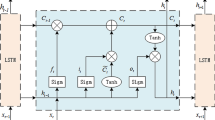Abstract
With the concept of “carbon neutral”, wind power industry ushers in a golden period of development. Wind turbine blades are the key components of wind turbine, their normal operation directly affects the operation of the whole wind power generation. The traditional diagnosis method of wind turbine blades needs to disassemble the wind turbine blades. However, due to the potential of long-short-term memory network model and feedforward network based on attention mechanism in anomaly detection and diagnosis, sequence model has become the mainstream of wind turbine blades anomaly detection. Unfortunately, RNN needs to wait for the end of the forward transmission of the previous time step before the forward transmission of the next time step. It can only input all the historical information by default, and can not achieve the fine control of the input information. Therefore, this paper applies TCN-ATT, a temporal convolution network based on attention mechanism, to intelligent anomaly detection of wind turbine blades by combining dilation convolution, causal convolution, the skip connection of residual blocks and attention module. In this method, causal convolution and dilation convolution are used to adapt to the frame of multi-dimensional time series data of wind turbine blades, which provides more flexibility for changing the size of receptive field. At the same time, attention mechanism is added to capture the relevant features in the sequence, so as to improve the classification accuracy of anomaly detection of wind turbine blades. To verify the effectiveness of the system, this paper compares the performance of TCN-ATT with TCN, LSTM, GRU and other methods. The comparative test shows that TCN-ATT has better performance of feature extraction and anomaly detection. In addition, TCN-ATT is applied to multi fault anomaly detection, which also achieves high classification accuracy.
Access this chapter
Tax calculation will be finalised at checkout
Purchases are for personal use only
Similar content being viewed by others
References
Lu, X., Fan, Y., Qian, K.: Summary and development trend of equipment fault diagnosis technology. Mining Mach. 035(012), 15–18 (2007). (in chinese)
Ince, T., Kiranyaz, S., Eren, L., et al.: Real-time motor fault detection by 1D convolutional neural networks. IEEE Trans. Ind. Electron. 63(11) (2016)
Zhao, M., Kang, M., Tang, B., et al.: Deep residual networks with dynamically weighted wavelet coefficients for fault diagnosis of planetary gearboxes. IEEE Trans. Industr. Electron. 65(5), 4290–4300 (2018)
Wang, S., **ang, J., Zhong, Y., et al.: A data indicator-based deep belief networks to detect multiple faults in axial piston pumps - ScienceDirect. Mech. Syst. Signal Process. 112, 154–170 (2018)
Rahimilarki, R., Gao, Z., **, N., et al.: Time-series deep learning fault detection with the application of wind Turbine benchmark. In: 2019 IEEE 17th International Conference on Industrial Informatics (INDIN). IEEE (2019)
Liu, Y., Cheng, H., Kong, X., et al.: Intelligent wind turbine blade icing detection using supervisory control and data acquisition data and ensemble deep learning. Energy Sci. Eng. 7(6) (2019)
**an, D., Han, N., Wei, T.: Fault identification of direct drive wind turbine based on deep learning. Renewable Energy Resources (2018)
Bai S, Kolter J Z, Koltun V.: An empirical evaluation of generic convolutional and recurrent networks for sequence modeling. CoRR, abs/1803.01271 (2018)
Yan, J., Mu, L., Wang, L., et al.: Temporal convolutional networks for the advance prediction of ENSO. Sci. Rep. 10(1), 8055 (2020)
Dai, R., Xu, S., Gu, Q., et al.: Hybrid spatio-temporal graph convolutional network: improving traffic prediction with navigation data. ACM (2020)
Guirguis, K., Schorn, C., Guntoro, A., et al.: SELD-TCN: sound event localization & detection via temporal convolutional networks (2020)
Oord, A., Dieleman, S., Zen, H., et al.: WaveNet: a generative model for raw audio (2016)
Yu, F., Koltun, V.: Multi-scale context aggregation by dilated convolutions. In: ICLR (2016)
He, K., Zhang, X., Ren, S., et al.: Deep Residual Learning for Image Recognition. IEEE (2016)
Zhang, H., Zhou, Q., Ren, X.: Analog detection for wind turbines based on autoencoder model. Software Guide 018(009), 158–162 (2019)
Chung, J., Gulcehre, C., Cho, K.H., et al.: Empirical evaluation of gated recurrent neural networks on sequence modeling. Eprint Arxiv (2014)
Hochreiter, S., Schmidhuber, J.: Long short-term memory. Neural Comput. 9(8), 1735–1780 (1997)
Vaswani, A., Shazeer, N., Parmar, N., et al.: Attention Is All You Need. ar**v (2017)
Bai, S., Kolter, J.Z., Koltun, V.: Trellis Networks for Sequence Modeling (2018)
Katser, I.D., Kozitsin, V.O.: Skoltech Anomaly Benchmark (SKAB). Kaggle (2020). https://doi.org/10.34740/KAGGLE/DSV/1693952
Malhotra, P., Ramakrishnan, A., Anand, G., et al.: LSTM-based Encoder-Decoder for Multi-sensor Anomaly Detection (2016)
Fan, H., Zhang, F., Li, Z.: AnomalyDAE: dual autoencoder for anomaly detection on attributed networks. In: ICASSP 2020–2020 IEEE International Conference on Acoustics, Speech and Signal Processing (ICASSP) (2020)
Luo, W., Wen, L., Gao, S.: Remembering history with convolutional LSTM for anomaly detection. In: 2017 IEEE International Conference on Multimedia and Expo (ICME). IEEE (2017)
Cao V L, Nicolau M, Mcdermott J. A Hybrid Autoencoder and Density Estimation Model for Anomaly Detection[C]// International Conference on Parallel Problem Solving from Nature. Springer, Cham, 2016
Tao, X., Peng Y, Zhao F, et al. An Improved Parallel Network Traffic Anomaly Detection Method Based on Bagging and GRU[C]// International Conference on Wireless Algorithms, Systems, and Applications. Springer, Cham, 2020
Hao, H., Wang, Y., **a, Y., et al.: Temporal convolutional attention-based network for sequence modeling (2020)
Author information
Authors and Affiliations
Corresponding author
Editor information
Editors and Affiliations
Rights and permissions
Copyright information
© 2022 Springer Nature Switzerland AG
About this paper
Cite this paper
Ding, J., Lin, F., Lv, S. (2022). Temporal Convolution Network Based on Attention for Intelligent Anomaly Detection of Wind Turbine Blades. In: Lai, Y., Wang, T., Jiang, M., Xu, G., Liang, W., Castiglione, A. (eds) Algorithms and Architectures for Parallel Processing. ICA3PP 2021. Lecture Notes in Computer Science(), vol 13155. Springer, Cham. https://doi.org/10.1007/978-3-030-95384-3_13
Download citation
DOI: https://doi.org/10.1007/978-3-030-95384-3_13
Published:
Publisher Name: Springer, Cham
Print ISBN: 978-3-030-95383-6
Online ISBN: 978-3-030-95384-3
eBook Packages: Computer ScienceComputer Science (R0)




